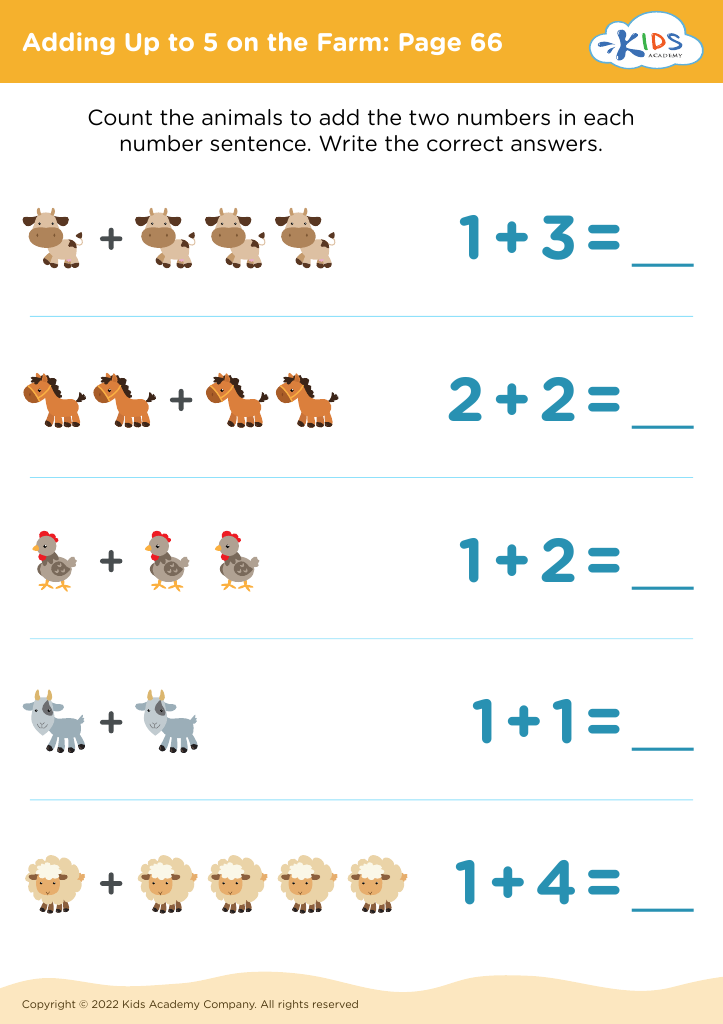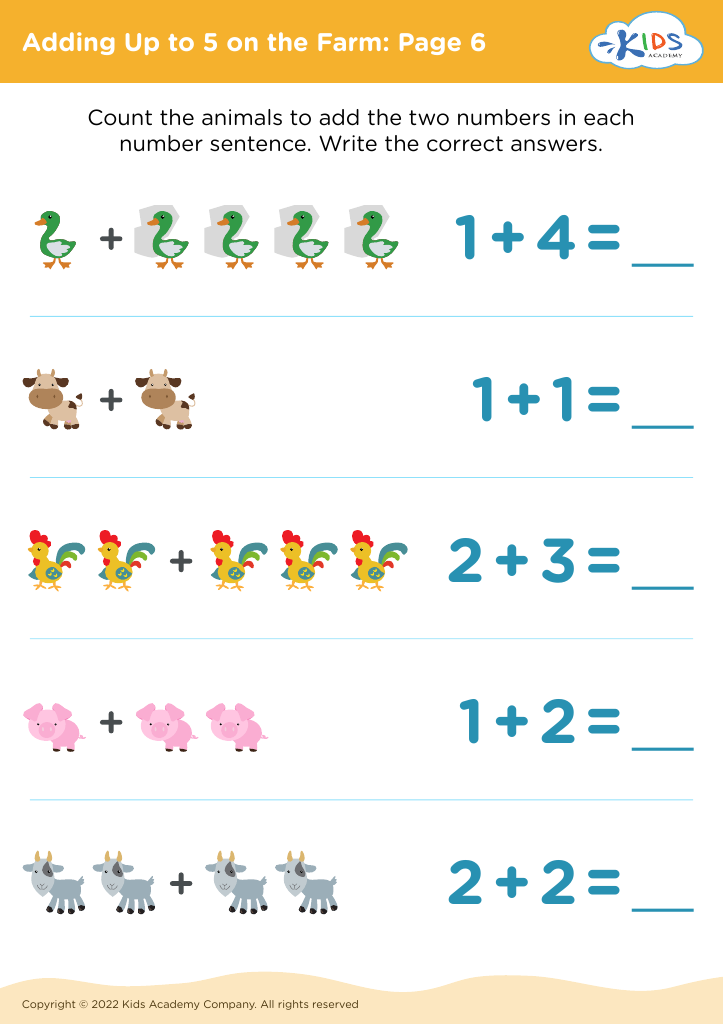Visual Learning Worksheets for Ages 5-6
99 filtered results
-
From - To
Unlock your child's creative potential with our Visual Learning Worksheets for ages 5-6! These engaging and colorful resources are designed to enhance visual comprehension and cognitive skills through interactive activities. Your little learners will enjoy learning essential concepts, exploring shapes, colors, and patterns, all while developing critical thinking abilities. Each worksheet promotes hands-on experiences that bridge the gap between fun and education, making learning an exciting adventure. Perfect for both home and classroom use, our worksheets encourage independence and foster a love for learning. Dive into a world of visual discovery and watch your child thrive academically today!


Wholes and Halves Worksheet


Two And Three Addition Worksheet


Butterfly Addition Worksheet


Subtracting Socks Worksheet


Find Quarters Worksheet
Visual learning is a crucial aspect of education for children aged 5-6, as it harnesses their natural inclination to process information visually. At this age, children's brains are rapidly developing, and they are highly receptive to visual stimuli, making learning through pictures, diagrams, and videos particularly effective.
Engaging with visual content can enhance comprehension and memory retention. For example, using colorful illustrations in storybooks helps children envision narratives, thereby improving their understanding and enjoyment of reading. Similarly, visual aids in math, like charts or block manipulatives, can simplify complex concepts, fostering a stronger grasp of fundamental skills.
Moreover, visual learning supports diverse learning styles. Many children may struggle with traditional text-based instruction, but visuals can bridge those gaps, encouraging participation and motivation. This approach fosters creativity and critical thinking as children analyze images and relate them to real-world contexts.
By investing in visual learning strategies—through interactive lessons, storytelling, and art—parents and teachers can nurture a love for learning, building a solid foundation for future academic success. In a visually-oriented world, teaching children to interpret and create visuals equips them with essential skills for effective communication and problem-solving as they grow.





 Assign to My Students
Assign to My Students
































